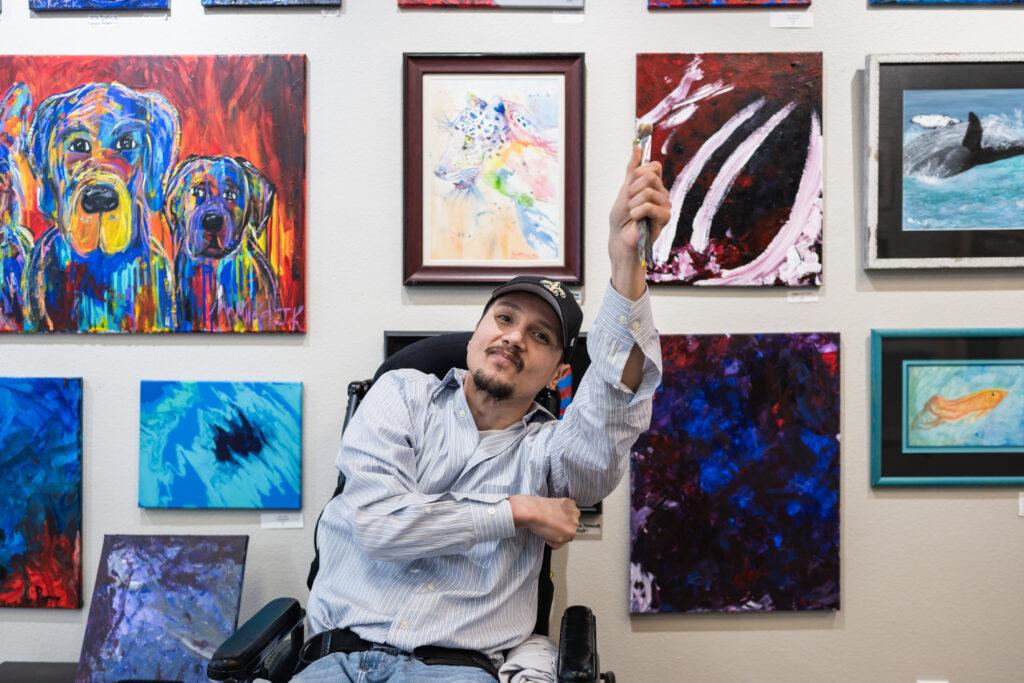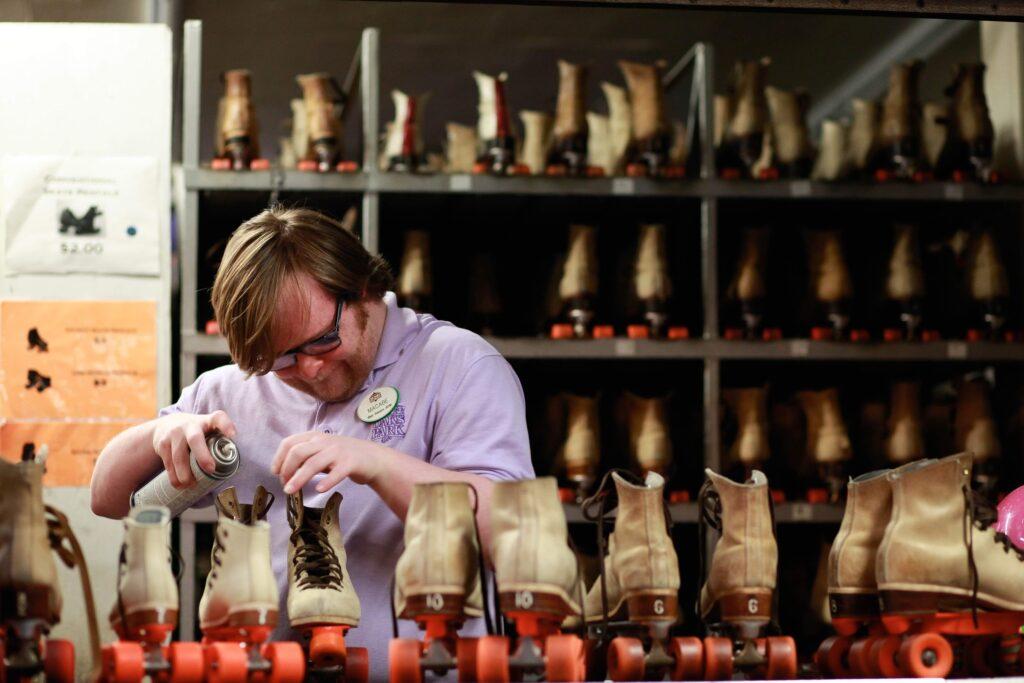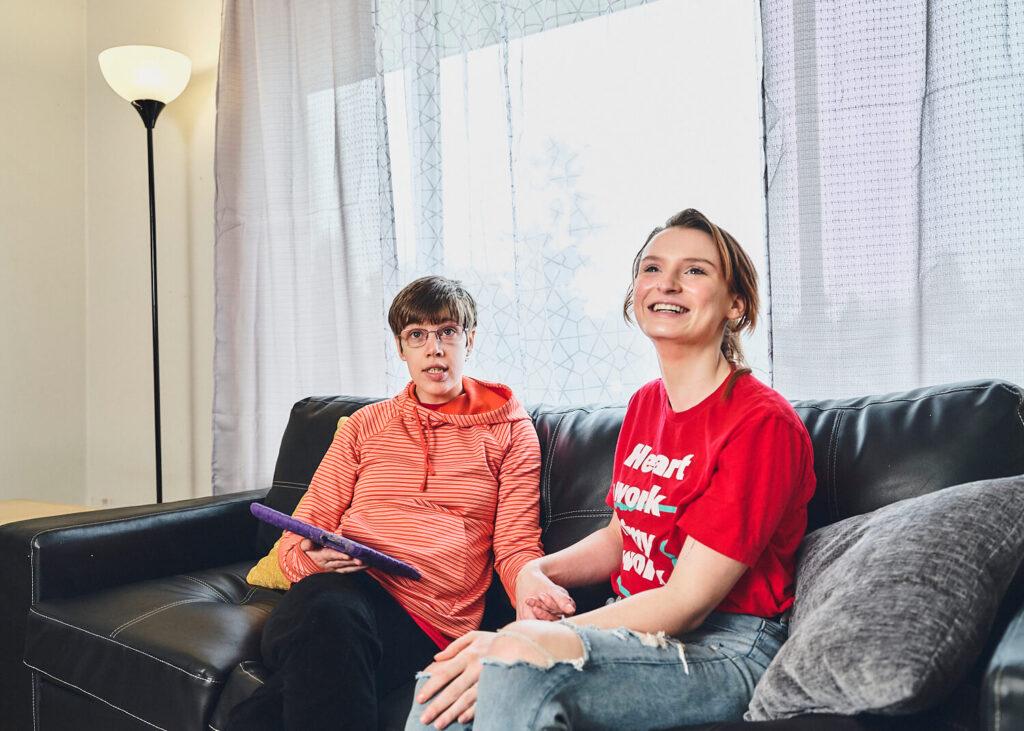Explore the ALSO Children’s Homes Wishlist and help fill the season with joy for the children supported by ALSO.
Explore the ALSO Children’s Homes Wishlist and help fill the season with joy for the children supported by ALSO.

Eleanor Roosevelt, a prominent civic leader and the wife of President Franklin D. Roosevelt, was once asked why her husband did so much for his country and for the world, despite his disability. Her response was intelligent and profound:
“No, no, no! He did those things because of his disability.”
Sometimes it’s difficult to realize the positive impact that people with disabilities have on communities and society as a whole. At ALSO, we’ve seen firsthand how communities benefit from including people with disabilities as equal partners in all aspects of daily life. The result is a diverse, prosperous, and vibrant community that benefits all of us, whether or not we have a disability.

Community inclusion is just as much a mindset as it is a set of guidelines and best practices. It is the belief that all of us, no matter our gender, race, sexual orientation, ethnicity, or disability, deserve to enjoy full participation as equal members in society. Community inclusion practices should be implemented in schools, workplaces, public areas, businesses, and housing.
Community inclusion also involves the recognition that each person is unique and has different talents and gifts to share with their neighbors, employers, teachers, peers, and family. It is exercising the right to make individual choices related to personal connections, values, preferences, needs, and goals for the future.

It has only been in recent years that the disability community has made real progress regarding community inclusion. However, we admit that more work needs to be done. The civil rights movement laid the foundation for The Rehabilitation Act of 1973 and The American with Disabilities Act (ADA) of 1990. This legislation opened the door to equal opportunities in education, work, health care, recreation, and housing. Finally, it was affirmed that disability rights were human rights.
A central element of human rights is equal opportunity and access to living, learning, working, and thriving in all that society has to offer. If we deny these rights to certain segments of the population, we are supporting an unequal society.
Human services professionals, mental health counselors, disability advocates, and researchers all emphasize the importance of community inclusion for people with disabilities. The ability to live and function alongside peers without disabilities leads to several positive outcomes:
LEARN MORE: Assistive Technology in the Workplace for People with Disabilities.

When it comes to the benefits and advantages of community inclusion, it’s definitely a two-way street! Let’s talk about the amazing benefits to all community members.
We live in a fast-paced, competitive world that isn’t as kind and caring as it should be. Being around people with different types of disabilities helps us to be more compassionate regarding struggles they might be having. But in addition, we learn they can be just as compassionate with us as we experience our own frustrations and disappointments. This knowledge fosters a sense of humility that keeps us grounded.
It’s true that the more we learn about the differences in others, the more we discover that we are actually quite similar! In turn, this creates benefits for our individual mental health that we all need: a healthy dose of self-compassion and self-acceptance. What goes around, comes around.
When people with disabilities are fully included in community life, it facilitates fresh perspectives–creating a better place for everyone to work, play, and thrive. A walk to the local playground becomes more exciting, because kids (as well as parents) are exposed to adaptive technology such as swing sets that accommodate children who use wheelchairs. Similarly, a visit to a local theater that has a signer for deaf individuals enlightens spectators to a different way of communicating.
People with disabilities offer unique talents and contributions to their communities. For instance, thanks to some tenacious and dedicated doctors who are living with physical disabilities, patients in war-torn South Sudan are getting access to needed health care. They are creating positive change by performing successful surgeries and prescribing needed prosthetics, orthotics, and adaptive devices for so many people injured by violence in their country. Because of their own disabilities, they have additional insight as to what is needed to help their patients be more independent.
Additionally, published research on the Special Olympics program has utilized the talents of people with intellectual disabilities as co-researchers in the data collection process. Researchers with intellectual disabilities were able to:
The above findings demonstrate the value of collaboration with individuals with intellectual disabilities in future research.
Society has made progress in promoting diversity, equity, and inclusion (DEI) in relation to race, national origin, religion, and sexual orientation. Still, diversity in disability is lagging. For example, 2022 US labor workforce data indicates that working-age individuals with disabilities were much less likely to be employed than those without disabilities. We need to broaden our perspective when we think of DEI to include individuals with disability.
The major advantage of promoting diversity in all aspects of daily living is that it prevents the negative impacts of discrimination, stereotyping, and bias. We become more tolerant as individuals and as a society.
Community inclusion of people with disabilities improves the economic health of the entire system. This holds true for large and small businesses, public entities, individuals with disabilities, and their peers without disabilities. Businesses have noted several advantages to hiring people with disabilities and paying them competitive wages:
Furthermore, we all like to buy things. Those with disabilities represent the third-largest market share in the US. Therefore, when people with disabilities spend their money in the community, it’s great for business. Additionally, the earned income of people with disabilities contributes to the tax base, a definite benefit to local governments and their residents. Finally, access to competitive employment opportunities decreases demands on Social Security Disability Health Insurance, Medicaid coverage, and other monthly benefits.
Have you ever been grateful for…
If so, you owe a big “thank you” to thousands of disability rights activists who fought for reasonable accommodations in housing, schools, workplaces, and throughout the community.
Although Selwyn Goldsmith first conceptualized the idea of those all-important curb-cuts, the term “universal design” was coined by an architect named Ronald Mace, who contracted polio as a child. After encountering numerous physical barriers in his wheelchair, he started advocating for housing, buildings, and public transportation that were barrier-free.
Today, principles of universal design are incorporated in almost all aspects of everyday life. This is partially because our population is getting older, with more of us experiencing medical conditions that lead to temporary or permanent disability.
LEARN MORE: A systematic review on universal design learning in education.

During our 25-year-plus history as service providers for people with I/DD, we have consistently worked with those we support, their family members, business owners, teachers, and other community members, to achieve the ALSO Vision of full community inclusion. We do this by asking, “What does your ideal future look like?” This one question begins an exploration process for everyone who supports that person with I/DD on how we can help them achieve their dreams for the future. Our wide variety of services are designed to accommodate people with different levels of ability. Here are just a few:
Please check out our support services to learn more.

Sign up for our newsletter to get our latest news, content, and job opportunities.
Help us ensure that everyone has the same opportunities in their home, workplace and community. Let’s make dreams!
